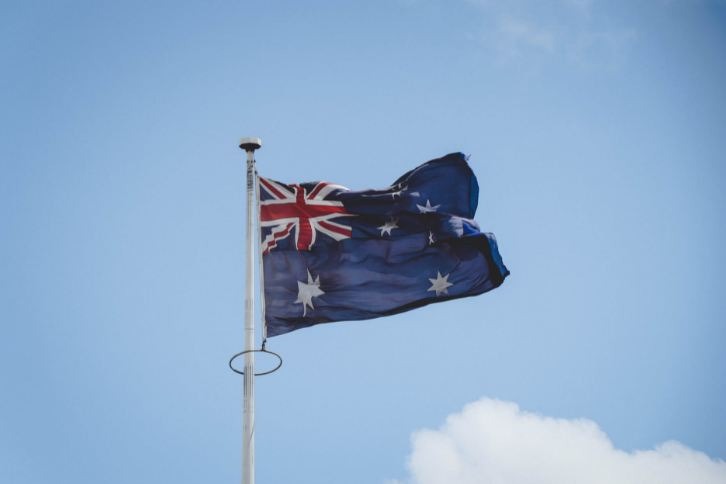Why Does Australia Wear Green and Yellow? The History Behind the Colors

Australia wears green and gold to reflect its national pride and unity, drawing inspiration from the golden wattle, the country's floral emblem. These colors were initially seen in sports with the cricket team in 1899. Over time, they became a symbol of Australia's rich sporting heritage and natural abundance. The official proclamation in 1984 cemented green and gold as the national colors, embodying Australia's spirit on global stages. You'll notice these colors during national events and sports, promoting a shared sense of belonging. If you're curious, there's more to uncover about how these hues became iconic.
Historical Adoption of Colors
The expedition of Australia's green and gold colors as a symbol of national pride began with their adoption by the Australian cricket team in 1899 during the Ashes series. It marked the initial official use of what would become the national sporting colors. As cricket captured the nation's imagination, these colors were ratified in 1908 for cricket teams, solidifying their significance in Australian sports culture. The prominence of green and gold didn't stop at cricket. In 1908, the Australasian Olympic team proudly sported these colors for the initial time, with the official uniform making its debut in the 1912 games.
The influence of green and gold extended beyond just cricket and the Olympics. In 1924, the national soccer team joined the tradition by wearing these iconic colors. The rugby teams followed suit, proudly donning green and gold in 1928 and 1929, further embedding these colors into the nation's sporting ethos. Though the official proclamation by Governor-General Sir Ninian M Stephen would come later, the widespread adoption of green and gold across different sports highlighted their status as symbols of unity and national pride, deeply rooted in Australia's sporting history.
Official Proclamation in 1984
April 19, 1984, stands out as a defining moment in Australia's cultural history when Governor-General Sir Ninian M Stephen officially proclaimed green and gold as the national sporting colors. This official proclamation marked a crucial step in unifying Australia's national identity, solidifying these lively hues' place in the country's sporting and cultural landscape. Prior to this, green and gold had been informally adopted by Australian teams since the late 1800s, with the cricket team initially adopting them in 1899.
By formalizing their status, the proclamation guaranteed that green and gold would consistently represent Australia across diverse national teams and events. It wasn't just about the colors themselves but what they represented—a shared pride and unity on the international stage. The move by the Governor-General was a cultural milestone, helping to foster a sense of national cohesion.
When you see Australian national teams donning their green and gold uniforms today, you're witnessing the legacy of this 1984 decision. It wasn't merely a matter of aesthetics; it was a commitment to a unified national identity, proudly displayed through the colors that symbolize Australia's spirit and heritage.
Sporting Heritage and Impact

Having officially adopted green and gold in 1984, Australia's sporting teams now wear these colors with pride, reflecting a rich sporting heritage. The national colours are more than just a uniform; they symbolize a legacy that began with the cricket team in 1899. But by 1908, green and gold had been ratified as the official sporting colours for cricket, setting a precedent for other sports.
As you cheer for the Socceroos or watch the Matildas, you'll notice these colors create a sense of unity and pride. Across the fields of rugby, soccer, and cricket, Australia's athletes don these lively shades, making them recognizable on the world stage. The Australian Rugby team, too, carries this tradition forward, embodying national pride with each match.
When the Olympic team competes, they're not just athletes; they're ambassadors of Australia's sporting spirit. The green and gold unify supporters and athletes alike, enhancing visibility and rallying support during major events. These colors are synonymous with sporting success and have become a hallmark of Australia's identity, celebrated whenever athletes step onto a global platform. It's a tradition that continues to inspire and unite Australians everywhere.
Symbolism and Meaning
Rooted in Australia's natural beauty, the green and gold colors draw inspiration from the golden wattle, the lively national floral emblem. These colors aren't just pretty; they carry deep symbolism. Green represents the lush landscapes, vast forests, and fertile agricultural areas, reflecting Australia's rich natural heritage. Gold, on the other hand, signifies the nation's wealth in natural resources, from minerals to agriculture. Together, these colors paint a picture of Australia's unique flora and abundant resources, forming a key part of the national identity.
When you see green and gold, you're reminded of the country's spirit and pride. These colors evoke a sense of unity, especially during sporting events. Officially recognized as national sporting colors in 1984, they offer a broader interpretation of nationalism beyond the national flag. They serve as a unifying force, fostering a shared sense of belonging among Australians.
Green and gold aren't just about aesthetics; they're a cultural bond. Consistently used in sports uniforms and branding, they reinforce cultural significance. When you wear or see these colors, you're not just showing support; you're embracing a piece of Australian heritage, celebrating national pride.
Use in National Events

Australia's iconic green and gold colors are more than just hues; they're a lively expression of national pride, especially evident during national events. Regardless of it being Australia Day celebrations or international competitions like the Olympics, these colors unite Australians, symbolizing their identity and cultural heritage. On Australia Day, communities across the country adorn themselves in green and gold, celebrating their shared history and achievements. It's a vivid display of national pride that connects people from all walks of life.
When it comes to sports, green and gold are the defining colors of national sporting teams. Wearing these colors, athletes embody Australia's spirit and unity, creating a sense of belonging and shared purpose among supporters. No matter if it's on the cricket pitch, the rugby field, or the swimming pool, seeing athletes in these colors fills everyone with pride, reminding them of their country's strong sporting legacy.
Even beyond events and celebrations, the green and gold have a prominent role in the Australian Made logo. This reinforces the colors' significance, promoting Australian products globally and further cementing their role in national identity. Embracing green and gold during national events is a powerful tradition, celebrating what it means to be Australian.
Alternatives and Variations
Throughout history, Australian teams have experimented with a variety of color combinations before settling on the iconic green and gold. From 1908 to 1928, blue and maroon were prominent in the National Rugby League, highlighting the diversity of early color choices. These alternatives were crucial in shaping the national identity we recognize today. Before green and gold became synonymous with Australian teams, blue and gold occasionally surfaced as variations, adding to the colorful tapestry of Australia's sporting history.
The Australian national soccer team, the Socceroos, initially donned green and gold in 1924, cementing the tradition that other sports teams soon followed. But the expedition to these colors wasn't straightforward. Some teams even leaned towards red, white, and blue, echoing the national flag and showcasing the multitude of directions considered. Commemorative jerseys sometimes pay homage to these historical variations, reflecting the rich history of team colors across different sports.
Cultural Significance

The green and gold colors of Australia carry immense cultural significance, symbolizing national pride and identity. They reflect the country's unique flora, particularly the golden wattle, which stands proudly as the official floral emblem. When you see the lively green and gold in sports uniforms, you witness a visual spectacle that unifies athletes and fans alike, fostering a profound sense of belonging and pride during international competitions. These colors aren't just about aesthetics; they encapsulate Australia's spirit and heritage.
- Green showcases the lush landscapes and the rich natural environment of Australia.
- Gold represents the nation's wealth in natural resources and agricultural abundance.
- The adoption of these colors in 1984 for national sports aimed at unifying Australians, promoting a cohesive national identity.
- Public celebrations often feature these hues, reinforcing their role as symbols of Australian culture.
- The golden wattle, as a floral emblem, ties these colors deeply to the nation's identity.
Influence on Branding and Design
In branding and design, the iconic green and gold colors of Australia not only capture national pride but also serve as powerful tools for establishing a distinct identity. When you see these colors, they instantly evoke thoughts of Australian heritage and values. The Australian Made logo, for instance, uses these colors to reinforce the national identity of products, making them easily recognizable both at home and abroad. It's not just about aesthetics; it's about creating a brand that connects with authenticity and trust.
Organizations like the National Party of Australia and Medicare Australia also harness the power of green and gold in their branding. By doing so, they tap into a sense of national unity and pride, making their campaigns more relatable to the public. Even the Australian National Railway aligns its visual identity with these colors, ensuring a strong association with the country's national identity.
Sports teams consistently use green and gold, enhancing brand recognition and fostering a unified spirit among fans and athletes alike. In your creative designs and marketing efforts, leveraging these colors can connect deeply with Australian cultural values, ensuring your message resonates on a national level.




